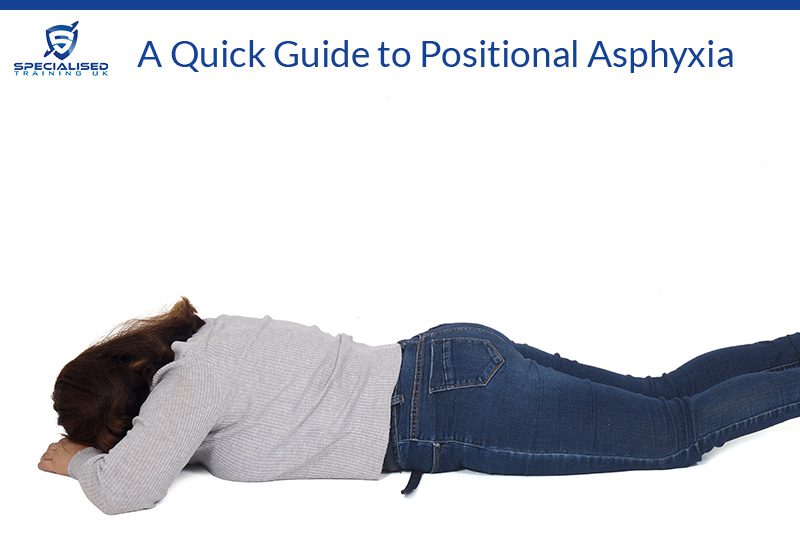Positional asphyxia is a form of asphyxia which occurs when someone’s position prevents them from breathing adequately. This is a critical topic that should be understood by professionals in various fields, including law enforcement, healthcare, and security. In this blog, we’ll explore what positional asphyxia is, its causes, how to recognise it, and the measures that can be taken to prevent it.

What is Positional Asphyxia?
Positional asphyxia happens when the position of a person’s body interferes with their ability to breathe. This can occur due to several reasons, including:
- Compression of the chest or abdomen.
- Obstruction of the airway due to head or neck positioning.
- The inability of the diaphragm to expand and contract properly.
When the body is in a position where the airways are restricted or the chest cannot expand, oxygen intake is significantly reduced, leading to hypoxia (low oxygen levels) and potentially fatal outcomes if not addressed promptly.
Common Causes and Risk Factors
Understanding the common causes and risk factors of positional asphyxia is crucial for prevention. Here are some scenarios where this condition can occur:
1. Restraint Techniques: In law enforcement or security, improper restraint techniques can lead to positional asphyxia. If an individual is restrained in a prone position (face down) with weight applied to their back, this can restrict their ability to breathe.
2. Medical Conditions: Certain medical conditions, such as obesity, respiratory illnesses, or neurological impairments, can increase the risk of positional asphyxia. Individuals with these conditions may have compromised breathing even in normal positions.
3. Substance Use: The use of alcohol or drugs can impair a person’s ability to maintain a safe position, increasing the risk of positional asphyxia. Intoxicated individuals may be unable to adjust their position to clear their airways effectively.
4. Physical Confinement: Situations where individuals are confined in tight spaces, such as during transportation or in poorly designed seating, can also lead to positional asphyxia.
Recognising Positional Asphyxia
Timely recognition of positional asphyxia can save lives. Key signs to watch for include:
- Difficulty breathing or laboured breathing sounds.
- Cyanosis (bluish tint to the skin, particularly around the lips and fingertips).
- Loss of consciousness or unresponsiveness.
- Panic or distress signals, such as thrashing or struggling.
It is essential for professionals in relevant fields to be trained to observe these signs and respond quickly and effectively.
Prevention Strategies
Preventing positional asphyxia involves a combination of proper training, awareness, and implementation of safety protocols. Enrolling in specialised training courses, such as the ones we offer are crucial. These courses cover safe restraint techniques, proper body positioning, and the physiological impacts of restraint. Professionals should be trained to recognise the early signs of distress and respond appropriately.
The Role of Specialised Training
Our training courses are instrumental in mitigating the risks associated with positional asphyxia. These courses provide hands-on experience and in-depth knowledge that can help professionals make informed decisions in high-pressure situations. Training can include simulated scenarios, feedback sessions, and assessments to ensure participants are proficient in recognising and preventing positional asphyxia.
Book one of our courses:
- PMVA, Physical Intervention And Restraint Reduction Training
- Positive handling training
- Safe Moving and Positioning / Handling of People Training
- Handcuffs and Soft Cuffs Training
Just contact us:
01372 231 011 or 07787 504 622
Or email: info@specialisedtraininguk.com
Or use the contact form on this website.

Comments
Comments are closed.